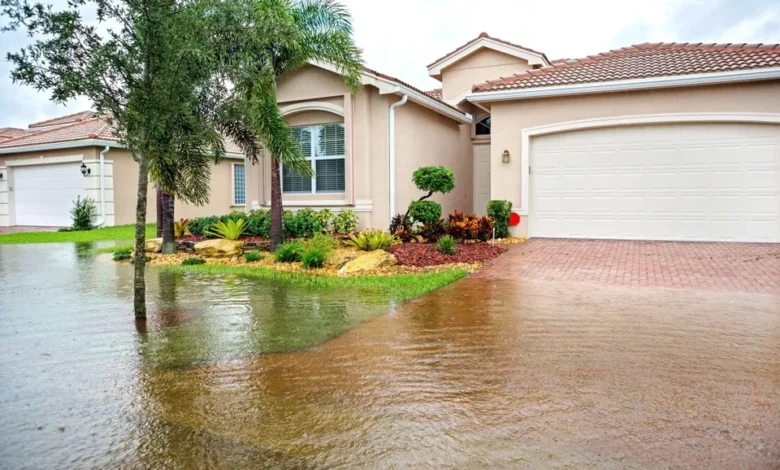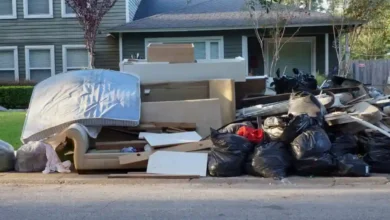How to Handle Water Damage Restoration in Your Tampa Home

Water damage often hits without warning, leaving your home in chaos. Whether it’s from a burst pipe, a natural disaster, or a leaky roof, the impact can be severe. As a homeowner in Tampa, you’re well aware of the unpredictable weather and the risks it brings. Knowing how to navigate water damage restoration in Tampa can prevent long-term issues and help you quickly restore your home to its original condition.
What is Water Damage Restoration?
Water damage restoration is the process of repairing and restoring your home after it has been compromised by water. This can include everything from drying out affected areas to repairing structural damage. Immediate action is crucial when dealing with water damage to prevent further harm, such as mold growth or wood rot.
Common Causes of Water Damage
There are several common causes of water damage that Tampa homeowners may face:
- Flooding from Storms: Tampa is prone to hurricanes and tropical storms that can cause significant flooding.
- Burst Pipes: Older homes or homes with poorly maintained plumbing systems may experience pipe bursts.
- Leaky Roofs: Unnoticed leaks in the roof can allow water to seep into the home, causing damage over time.
- Appliance Malfunctions: Water heaters, washing machines, or dishwashers can fail and lead to water pooling in your home.
Each of these situations requires prompt attention to prevent long-term consequences. By addressing water damage quickly, you can minimize costs and protect your home’s structure.
Step-by-Step Guide to Water Damage Restoration in Tampa
Dealing with water damage can feel overwhelming, but following a clear process can make it manageable. Here’s how to tackle water damage restoration in Tampa:
Ensure Safety First
Before you dive into restoration, ensure that it’s safe to be inside your home. If the water damage is due to flooding or a major storm, check for any structural damage that may make your home unsafe. Also, turn off the power to avoid electrical hazards if water has reached electrical outlets or appliances.
Stop the Water Source
Identify the source of the water and stop it from causing further damage. If it’s a plumbing issue, turn off the water supply. In the case of storm damage, you may need to cover broken windows or repair the roof temporarily to prevent more water from entering.
Document the Damage
Before you begin cleaning up, take photos and videos of the damage. This documentation is crucial for filing insurance claims. Be sure to capture every affected area, even if it doesn’t seem severely damaged at first glance.
Remove Standing Water
The next step is to remove any standing water. You can use a wet vacuum, sump pump, or towels to soak up water. The quicker you remove the water, the less chance there is for mold to develop.
Dry Out the Affected Area
Once the standing water is gone, you need to dry out the affected areas. Open windows, use fans and dehumidifiers to circulate air and help the drying process. If large areas are affected, professional-grade equipment might be necessary to ensure the home dries thoroughly.
Clean and Disinfect
Water damage can introduce bacteria and other harmful contaminants into your home, especially if the water comes from a flood or sewage backup. It’s essential to clean and disinfect all surfaces thoroughly to prevent health risks.
Remove Damaged Materials
Depending on the severity of the water damage, you may need to remove and replace certain materials like carpeting, drywall, or insulation. Mold can quickly develop in porous materials, so it’s important to eliminate anything that has been heavily soaked.
Address Mold Growth
Mold is a common consequence of water damage, especially in humid areas like Tampa. Even if you think you’ve dried the area, mold can develop in hidden spaces. A professional mold inspection and remediation may be necessary to ensure your home is mold-free.
Restore and Rebuild
After the area has been dried, cleaned, and disinfected, it’s time to restore your home. This might include replacing drywall, repainting walls, installing new flooring, and repairing any structural components that were compromised. For extensive damage, it’s often best to hire a professional restoration service.
The Importance of Professional Water Damage Restoration
While some minor water damage issues can be handled on your own, larger cases should involve professional help. Companies that specialize in water damage restoration in Tampa have the equipment, knowledge, and experience to ensure that all traces of water and moisture are removed from your home. They can also identify hidden areas of damage that the average homeowner might overlook.
Preventing Future Water Damage
After dealing with the immediate crisis, it’s important to take steps to prevent future water damage in your Tampa home. Here are a few preventative measures:
- Install a Sump Pump: If your home is prone to flooding, a sump pump can help remove water from your basement or crawlspace.
- Regular Roof Inspections: A professional should inspect your roof for leaks at least once a year, especially after storms.
- Maintain Plumbing Systems: Have your plumbing inspected regularly to catch minor issues before they become significant problems.
- Improve Drainage: Make sure that gutters and downspouts direct water away from your foundation to prevent flooding.
Conclusion
Water damage can be a nightmare for any Tampa homeowner, but knowing how to handle the restoration process makes all the difference. From stopping the water source to drying and disinfecting the area, quick and decisive action can save your home from severe damage. While some cases can be managed with DIY solutions, professional water damage restoration in Tampa is often necessary for larger or more complex issues. By being proactive and prepared, you can protect your home and ensure a faster recovery after any water damage incident.
Whether you’re facing a minor leak or extensive flooding, handling water damage ensures your home stays safe and comfortable for years to come.



